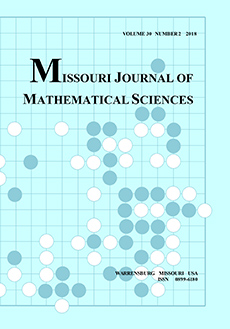Abstract
In the study of various objects indexed by permutations, a natural notion of minimal excluded structure, now known as a permutation pattern, has emerged and found diverse applications. One of the earliest results from the study of permutation pattern avoidance in enumerative combinatorics is that the Catalan numbers $c_n$ count the permutations of size $n$ that avoid any fixed pattern of size three. We refine this result by enumerating the permutations that avoid a given pattern of size three and have a given letter in the first position of their one-line notation. Since there are two parameters, we obtain triangles of numbers rather than sequences. Our main result is that there are two essentially different triangles for any of the patterns of size three, and each of these triangles generalizes the Catalan sequence in a natural way. All of our proofs are bijective, and relate the permutations being counted to recursive formulas for the triangles.
Citation
Derek Desantis. Rebecca Field. Wesley Hough. Brant Jones. Rebecca Meissen. Jacob Ziefle. "Permutation Pattern Avoidance and the Catalan Triangle." Missouri J. Math. Sci. 25 (1) 50 - 60, May 2013. https://doi.org/10.35834/mjms/1369746397
Information




